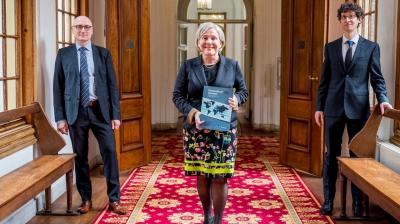Costing Conflict
Early Warning and Early Action (EWEA) processes seek to identify the risk of conflict, instability and violence. A large number of foresight models can predict which countries and areas may experience what type and what levels of violence. From this, they produce lists of countries and regions at risk which then qualify for policy measures to help improve stability.
However, in order to prioritise countries and regions it is equally important to assess the implications (or the cost) of conflict. For example, Early Warning by the OSCE High Commissioner on National Minorities (HCNM) seeks to “prevent tensions from escalating into conflict” and focus on all forms of tension accordingly. UNDP Early Warning seeks to understand how conflict impacts development initiatives and will prioritise countries with those problems. Mandates and interests thus determine priorities.
Assessing security interests of governments
What interests are at stake is however often assumed rather than explicitly considered. This report addresses this by building a methodology to assess interests, specifically the security interests of governments. The goal is to understand how the outbreak and intensification of conflict affect (security) interests. The method is built upon the notion that effectively designed EWEA processes need these impact assessments as much as conflict risk assessment.
Developing an impact assessment method is complicated for two reasons. First, methods need to be tailor-made for specific (country) interest. After all, instability in Libya will have different effects for France, Italy or Egypt. This requires explicit definitions of vital interests and a detailed specification of how potential instability might affect them. Second, impact assessment methods are often unavailable or are so specialised (e.g. only within the intelligence community) that there is very little fruitful exchange on how best to devise impact methods.
This report aims to tackle both problems. It provides a methodology for the Netherlands and proposes a quantitative approach that focusses on so-called ‘transmission belts’: patterns through which instability abroad manifest themselves in the Netherlands.
Fortunately, there is a tradition to build on as the government of the Netherlands has some open-source impact assessments. Yet, existing methods which assess impact need improvement. For example, how can one account for the interests of one’s allies? Do we distinguish between the effects of intra-state and inter-state conflict on Dutch security interests? Which transmission belts actually exist? What kind of method can be used?
A methodology for impact assessment
This report tackles these questions and proposes a methodology for impact assessment. The proposal is deliberately open source and relies heavily on methodology as it seeks to justify choices and sponsor dialogue. The hope is that an explicit and open discussion of choices will allow the Dutch government and the ecosystems of actors working on EWEA in the Netherlands to criticise and improve impact assessments. This report therefore aims to inform further discussions on the effectiveness of various impact assessment methods.
Reading guide
The report has the following composition. The first chapter reviews the existing Dutch impact assessment frameworks (ANV, Clingendael and HCSS) and arrives at a set of conditions with which EWEA impact assessments should comply. The second chapter develops an impact assessment method which is specifically tailored to Dutch EWEA efforts by tackling various limitations of the three previously analysed assessment frameworks (e.g. being too nationally focused). The third chapter presents and discusses specific indicators to measure impacts. The final section concludes and provides a guideline on how to interpret the results.
Download report.
Follow @Clingendaelorg on Twitter.








